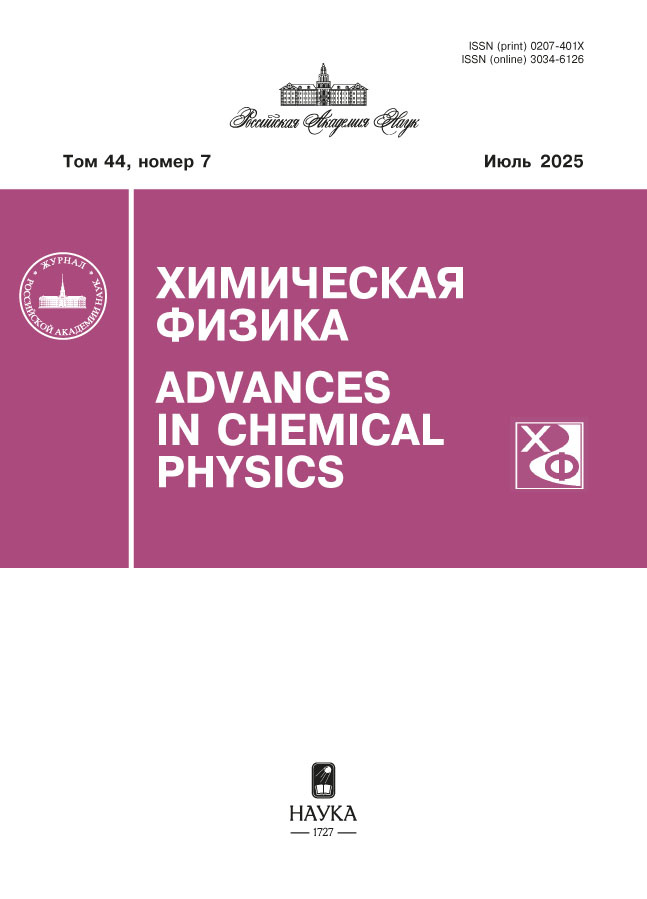Parameters of Thermal Radiation of a Hydrogen Flame
- Autores: Shebeko Y.N.1
-
Afiliações:
- All Russian Research Institute for Fire Protection of the Ministry of the Russian Federation for Civil Defense, Emergencies and Elimination of Consequences of Natural Disasters
- Edição: Volume 44, Nº 7 (2025)
- Páginas: 100-105
- Seção: Combustion, explosion and shock waves
- URL: https://cardiosomatics.ru/0207-401X/article/view/687635
- DOI: https://doi.org/10.31857/S0207401X25070109
- ID: 687635
Citar
Texto integral
Resumo
High attention is now devoted to a fire safety of objects with a presence of hydrogen due to a rapid development of a hydrogen energetics. An evaluation of a risk for the objects of hydrogen energetics is one of the key tasks for a such development. A decision of this task requires an information on a radiation intensity of hydrogen flames. But this information published in literature is often non-complete and sometimes contradictive. Therefore, this study is aimed on a review of literature sources published in Russian and international journals. The main value required for the fire risk evaluation is a surface radiation intensity of hydrogen flames. In this study four types of the flames were considered: gaseous jet flame; jet flame of liquid hydrogen; pool fire of liquid hydrogen; fireball. It was noted that surface thermal radiation intensity of the hydrogen flames is remarkably lower in comparison with hydrocarbon flames. The surface thermal radiation intensity Ef of a hydrogen gaseous jet flame cfn be accepted to be equal 33 kW/m2 in the fire risk calculations. The Ef value for the hydrogen fireball can be accepted to be equal 330 kW/m2. The surface thermal radiation intensity for combustion of liquid hydrogen (both for the jet flame and the pool fire) can be accepted to be equal 80 kW/m2.
Palavras-chave
Texto integral
Sobre autores
Yu. Shebeko
All Russian Research Institute for Fire Protection of the Ministry of the Russian Federation for Civil Defense, Emergencies and Elimination of Consequences of Natural Disasters
Autor responsável pela correspondência
Email: yn_shebeko@mail.ru
Rússia, Balashikha
Bibliografia
- Gordienko D.M., Shebeko Yu.N. // Occupational Safety in Industry. 2022. № 2. P. 7. [In Russian]
- Shebeko Yu.N. // Fire Safety. 2020. № 4. P. 36. [In Russian]
- Tereza A.M., Agafonov G.L., Anderzhanov E.K. et al. // Rus. J. Phys. Chem. B. 2023. V. 42. N. 3. P. 70.
- Troshin K.Ya., Rubtsov N.M., Tsvetkov G.I., Chernish V.I., Shamshin I.O. // Russ. J. Phys. Chem. B. 2023. V. 17. N. 2. P. 433.
- Sumskoi S.I., Sophin A.S., Zainetdinov S.H., Lisanov M.V., Agapov A.A. // Rus. J. Chem. Phys. B. 2023. V. 17. N. 2. P. 419.
- Vasilev A.A., Vasilev V.A. // Combustion, Explosion and Shock Waves. 2024. V. 60. № 5. P. 30.
- Ekoto I.W., Houf W.G., Ruggles A.J., Creitz L.W., Li J.X. // Proc. 9th International Pipeline Conference IPC 2012. Calgary, Alberta, Canada (IPC 2012-90535), 2012.
- Schefer R.W., Houf W.G., Bourne B., Colton J. // Int. J. Hydrogen Energy. 2006. V. 31. P. 1332.
- Schefer R.W., Houf W.G., Williams T.C., Bourne B., Colton J. // Int. J. Hydrogen Energy. 2007. V. 32. P. 2081.
- Studer E., Jamous D., Jallais S. et al. // Int. J. Hydrogen Energy. 2009. V. 34. P. 9611.
- Lowesmith D.J., Hankinson G. // Process Saf. Environ. Prot. 2012. V. 90. P. 108.
- Lowesmith D.J., Hankinson G. // Process Safety and Environmental Protection. 2013. V. 91. P. 101.
- Wang C.J., Wen J.X., Chen Z.B., Dembele S. // Int. J. Hydrogen Energy. 2014. V. 39. P. 20560.
- Houf W., Schefer R. // Int. J. Hydrogen Energy. 2007. V. 32. P. 136.
- Gomez-Mares M., Zarate L., Casal J. // Fire Safety J. 2008. V. 43. № 8. P. 583.
- Karpov V.L. // Pozharovzryvobezopasnost. 1999. Т. 8. № 5. P. 38. [In Russian]
- Friedrich A., Breitung W., Stern G. et al. // Int. J. Hydrogen Energy. 2012. V.37. P.17589.
- Hecht E.S., Chowdhury B.R. // Int. J. Hydrogen Energy. 2021. V.46. P.12320.
- Hall J.E., Hooker P., Willoughby D. // Int. J. Hydrogen Energy. 2014. V. 39. P. 20547.
- NFPA 2: Hydrogen Technologies Code. National Fire Protection Association, 2023.
- Zalosh R. // Proc. 5th Int. Seminar on Fire and Explosion Hazards. Edinburgh. 2008. P. 149.
- Ustolin F., Paltrinieri N., Landucci G. // J. Loss Prevention Proc. Ind.. 2020. V. 68. P. 104323.
- Wingerden K., Kluge M., Karim A., Ustolin F., Paltnieri N. // Chem. Eng. Trans. 2022. V. 90. P. 547.
- Bernardy C., Habib A.K., Kluge M. et al. // J. Loss Prevention Proc. Ind. 2025. V. 94. P. 105491.
- Betteridge S., Philips L. Large scale pressurized LNG BLEVE experiments. Symposium series № 160. Shell, 2015.
- Roberts A.F. // Fire Safety J. 1982. V. 4. P. 197.
Arquivos suplementares










